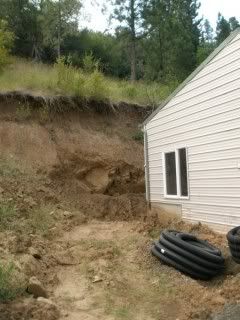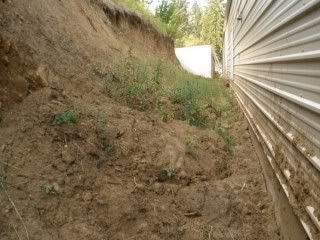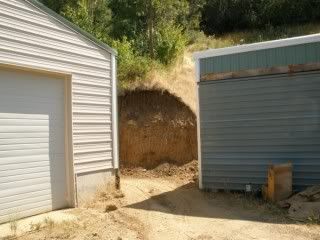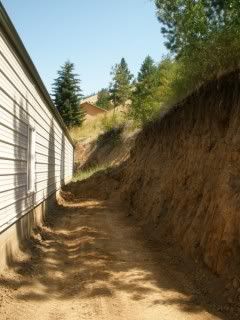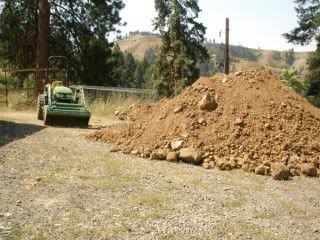Last winter we had an extreme rain/snow period. It super saturated the hill (mountain) behind my shop and it finally let go. It came down along the entire back of my shop (100'). Luckily, my shop has a 4' concrete stem wall back there. It came up over it onto the tin in a few places, trapped the water and caused some flooding inside.
My shop is built on a flat spot cut into the mountain. Needing more junk storage, I also built a shed next to it. Bad idea.......
The mountain needed to be moved.
Basically, I can't get behind the shop from the E due to the rock wall (built the shop as far into the mountain as I could to get a good sized shop.) On the W end there is exactly 6'6" between the shop and shed. Once in between you have to make a sharp left turn to go down the length of the shop. That ruled out any large machines which would have really made the job easier.
Wheel barrow time. What I do have is a small excavator and a small (25hp) JD wheel tractor with a 2 wheel barrow bucket.
First part of the job was digging into the corner to get enough room to make the turn. Dig and break up the packed clay/rocks with the exc and the bucket it out. Once I got around the corner it was the same process, dig and break up the hard pack and bucket out with the JD.
I'm about half way now. There's a dirt wall 15' high beside me about 8-10' out from the shop (when built, that was a sloping wall, 4' out from the building). I have removed around 40 yds so far, 2 wheel barrows at a time.
I originally looked at getting a 420C with bucket to remove the dirt. At the half way point, I was thinking about this. With a crawler, half as many trips to get dirt out and about 10 times more work for me. I was thinking about all the shifting and lever pulling.
This is probably one job the the little JD does easier. Since this is not exactly a fun job and rather extreme care is needed when exiting between the buildings, maybe the wheely has found it's best use.
Gus



